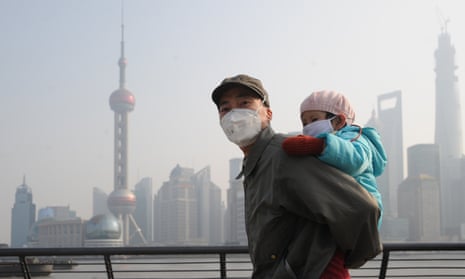Spikes in air pollution increase the risk of cardiac arrhythmias, a large study has found.
The research, based on nearly 200,000 hospital admissions in China, found a significant increase in risk of arrhythmias in the first few hours after an increase in air pollution levels. Heart arrhythmias can increase the risk of heart disease and sudden cardiac death.
“We found that acute exposure to ambient air pollution was associated with increased risk of symptomatic arrhythmia,” said Dr Renjie Chen of Fudan University in Shanghai. “The risks occurred during the first several hours after exposure and could persist for 24 hours.”
A study last year reported a link between fine particulate air pollution and cardiac arrhythmias in otherwise healthy teenagers, and confirmed that this translates to a meaningful health risk. The study also suggested that the exposure risk from six pollutants was roughly linear without an obvious safe threshold.
The study included 190,115 patients admitted to hospital in 322 Chinese cities, who were suffering from sudden onset arrythmia, including atrial fibrillation, atrial flutter, premature beats and supraventricular tachycardia. Air pollution in China is well above the World Health Organization’s guidelines for air quality, and the researchers analysed the concentrations of six air pollutants from monitoring stations closest to the reporting hospitals.
Of these, nitrogen dioxide (NO2) had the strongest association with all four types of arrythmia. The exact impact of air pollution is not clear, but there is some evidence that it causes oxidative stress and inflammation, which can affect the heart’s electrical activity.
“Although the exact mechanisms are not yet fully understood, the association between air pollution and acute onset of arrhythmia that we observed is biologically plausible,” the authors wrote.
A previous study found that on high pollution days in England hundreds more people are rushed into hospital for emergency care after suffering cardiac arrests, strokes and asthma attacks. In 2020, the British Heart Foundation estimated more than 160,000 people could die in the coming decade from strokes and heart attacks linked to air pollution. And the health impacts extend beyond heart disease, with research showing that particulate air pollution is driving up rates of lung cancer, by awakening dormant mutations that trigger the growth of tumours.
The authors said the findings, published in the Canadian Medical Associatiown Journal, highlight the need to protect at-risk people during heavy air pollution and to reduce overall exposure.










